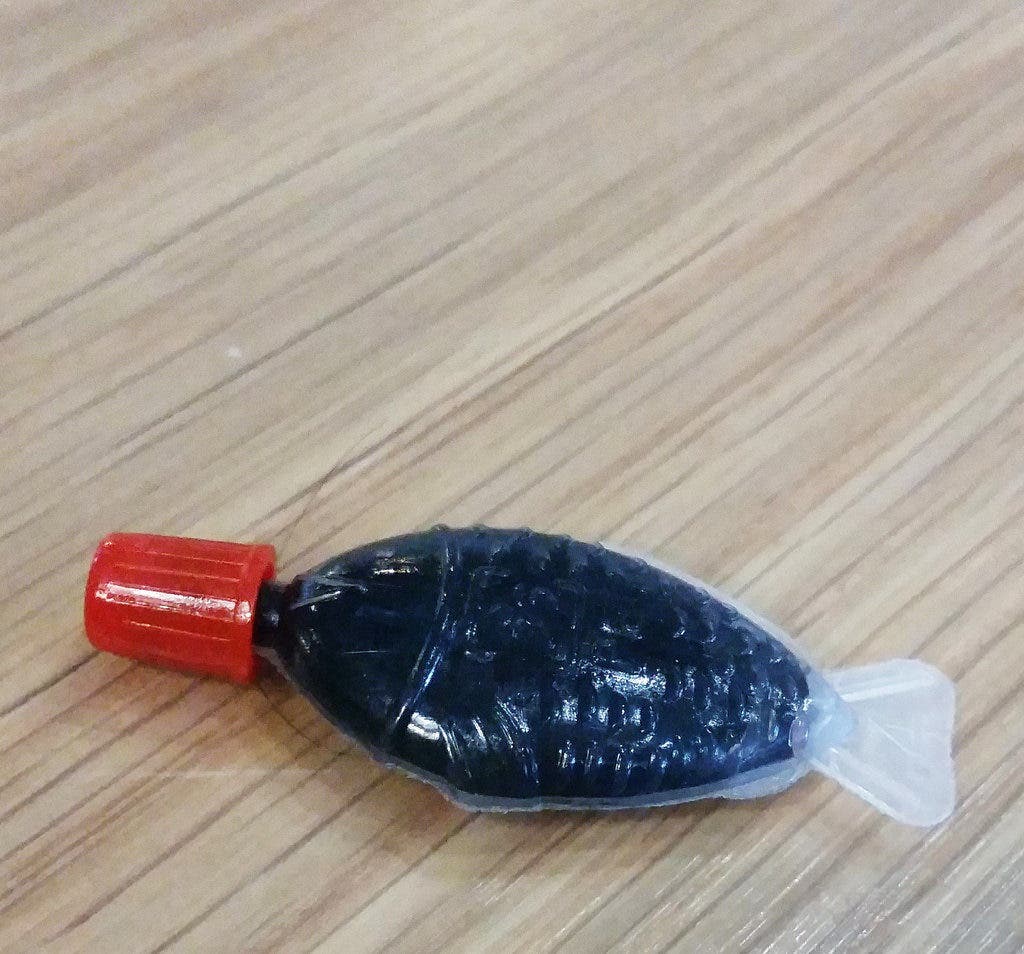If you have ever bought a package of sushi, nestled in alongside the ginger and wasabi you might have seen a little plastic fish that contains soy sauce. The fishy containers are popular because they are re-sealable and non-drip. Apparently, they aren’t all the same and they come in a variety of different shapes and designs. A Japanese entomologist has ventured from his area of expertise to delve into the taxonomy of these plastic fish and he has actually sorted them into distinct families and genera. You may wonder, why? Perhaps it is an ode to the humble soy sauce container, perhaps another outlet for a taxonomist to channel OCD, or perhaps just because.
The author of the book, Yoshihisa Sawada, is an expert in Japanese insect taxonomy and has worked at the Museum of Nature and Human Activities in Hyogo, having published several scientific papers in this field. He took his taxonomic expertise and applied it to an unlikely subject, seemingly below his expertise: plastic fish-shaped soy sauce bottles. He applies his same methodology and treats his subject with all the reverence and seriousness of an actual taxonomic study on living animals. The book was published in 2012 and, alas, is only available in Japanese. The rough translation of the title into English is “Soy sauce sea bream”. “Bream” refers to freshwater and marine fish from a variety of genera that are typically narrow and deep-bodied.

First, Sawada provides us with a precise definition of the subject matter: “A liquid seasoning container made of mass-produced synthetic resin, imitating the shape of the fish as a whole.”
Sawada next identified important characteristics on the plastic fish, such as the shape of the dorsal fin, tail fin, cap, and the number of protrusions. From this information, he took the shared and novel characteristics and grouped the fish into different families and genera.
https://twitter.com/timesoftokyo/status/969857172367581184
In total, there are 76 separate “species” of the fish containers. They are pictured with a ruler for scale and sketches that include important characteristics for classification. Each species is given a detailed description as well.
Here is a sample, which has been roughly translated from Japanese to English:
“The body is asymmetric, the sculptures of the torso and the caudal fin of the right half are omitted, the cap is a Ding, the step has a difference in the nozzle part and the mouth, there is no mouth sculpture, the sculpture of the eye is only ○. The sculpture of the pectoral fin is round. There is a round protrusion at the base of the pectoral fin, the sculptor is only the radial crust, the dorsal fin protrudes and there is the sculpture of the crimped scales … The scales are arranged like warts and are alternately arranged. There is no character engraving or point sculpture for identification, it appeared in 2005, with a material mark from the beginning.”
In the end, the 76 species are divided into 6 families and 21 genera based on their characteristics. The idea is definitely quirky, which adds to its charm. It is rather reminiscent of the peer-reviewed article, published in the British Medical Journal in 2011, that classified and made a phylogeny of bread clips. Ah, how great it is when taxonomists apply their obsessive ordering to inanimate objects. Now I’ll be waiting for the English translation!






